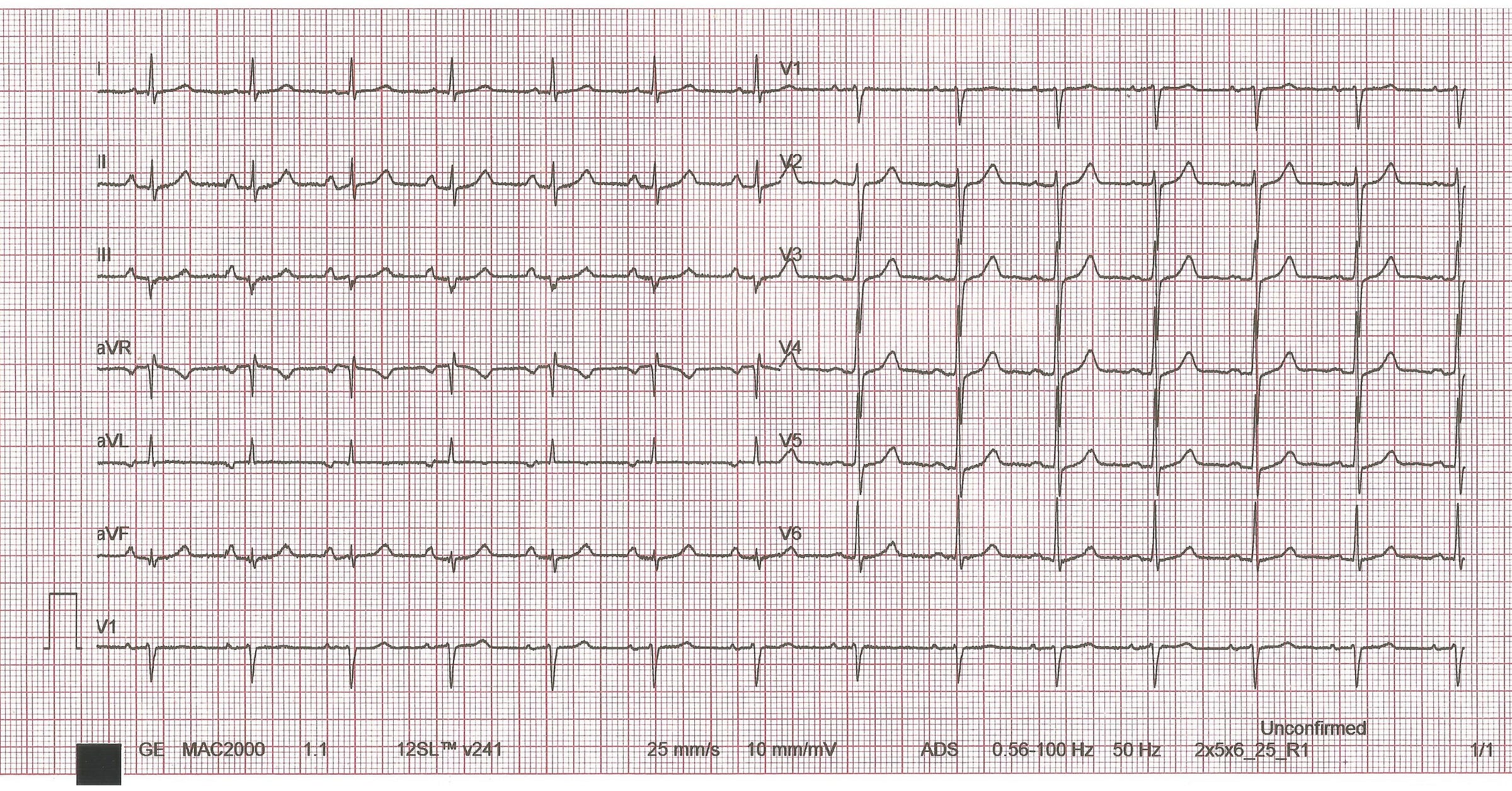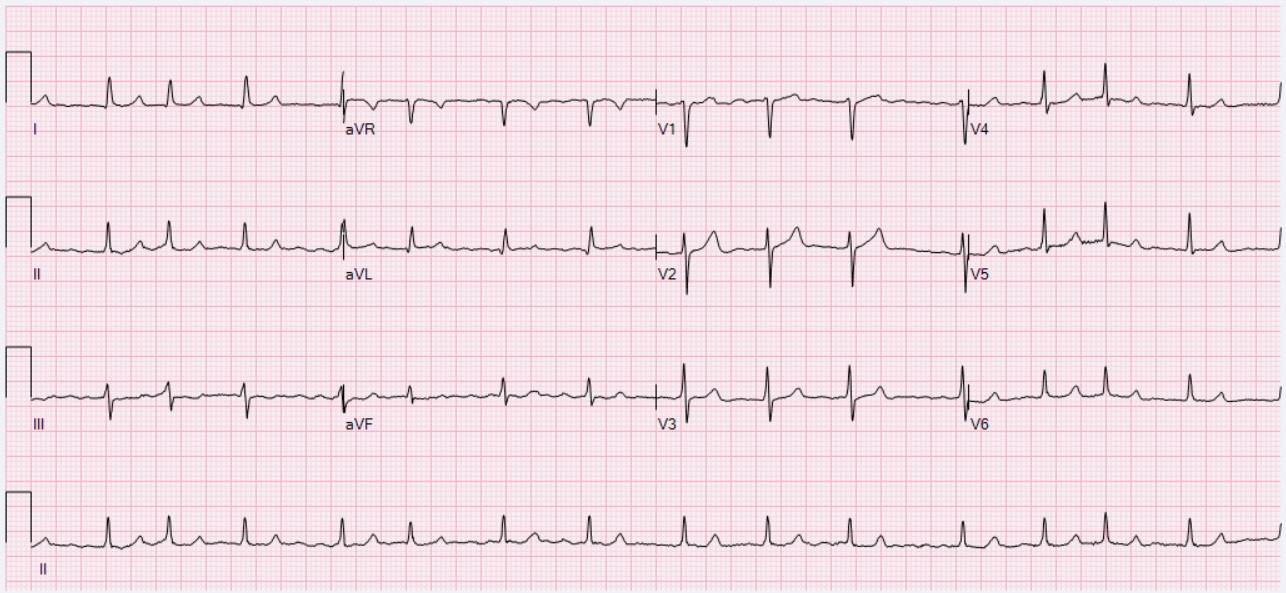How to calculate the heart rate
Three ways to calculate the heart rate on a 12-lead ECG
You can find the answer to this question at the end of this post.
What we mean by “heart rate”
First and foremost, it’s important to emphasise that by “heart rate” we mean the rate of ventricular depolarisation.
On an ECG, periodic phenomena occur alongside ventricular depolarisation, such as atrial depolarisation (P wave). These atrial depolarisations have a rate, which may differ from the commonly referred-to “heart rate.” For instance, in atrial flutter, the atrial depolarisation rate is 300 per minute, but only half of the electrical signals reach the ventricles (if there is 2:1 AV block), causing them to depolarise at a rate of 150 per minute. In this case, the “heart rate” is 150 beats per minute.
Three main ways to calculate the heart rate
There are mainly three ways to calculate the heart rate:
the accurate way
the fast way
the reliable way
The accurate way
This is if you want to know exactly what the heart rate is.
Basically, you want to calculate how many QRS complexes occur in a minute, i.e. in 60 seconds. You devide the 60 seconds by the RR interval, which must be calculated in seconds:
For example, in the following ECG I count 18 small squares (18 mm) from one R wave to the next R wave. When the paper speed recording is 25 mm/s (standard setting), each mm represents 0.04 seconds of duration. So 18 mm is 0.72 seconds. Therefore, the heart rate in the following ECG is:
But let’s say you’re in a hurry (which would be 1000% of the time when working at the hospital) and you don’t care about being extremely precise with the heart rate. What could you do?
The fast way
By using the formula above (60/RR) we can calculate what the heart rate would be if the RR interval was equal to one large square, two large squares, three large squares and so on. You can see in the image below that one large square would be 300 bpm, then 300/2 = 150, then 300/3 = 100 etc, if the paper recording speed is the standard one (i.e. 25 mm/s).
So this way you can say that, since the first R wave coincides almost exactly with the start of a large square and the next R wave is almost 4 large squares away, then the heart rate is about 75 bpm.
However, to use the aforementioned methods accurately, you must assume that each RR interval is the same (i.e. the rhythm must be REGULAR).
If your rhythm is irregular, you cannot apply this method precisely because each R-R interval varies, making it challenging to determine which one to measure.
In such cases, you can use the reliable way.
The reliable way
Let’s refer to this as the reliable method since it provides a solid estimate of the heart rate, regardless of whether the rhythm is regular.
Using this method, you count the number of QRS complexes within 15 large squares, then multiply by 20 (or 30 large squares and multiply by 10). This is because each large square (5 mm) represents 0.2 seconds, assuming the standard recording speed of the paper. Hence, 15 large squares equate to 3 seconds (and 30 large squares equate to 6 seconds).
Counting the QRS complexes in this period and multiplying accordingly gives you an estimate for 60 seconds.
For example, I counted 10 QRS complexes within 30 large squares in the following ECG, so I know that the heart rate is going to be approximately 100 bpm. This rhythm in this ECG is irregularly irregular, and therefore I couldn’t use any other method to calculate the heart rate.
The answer to the first question of this post
The first ECG provided in this post shows an irregular rhythm, so the only way we should use to calculate the heart rate is the reliable way.
If you did this and you estimated that the heart rate is approximately 40 bpm… unfortunately, that’s incorrect.
You might have noticed that throughout this post I provide the disclaimer that all these calculations to be true require the paper recording speed to be the standard one, i.e. 25 mm/s. In the first ECG provided, the recording speed is 50 mm/s (mentioned at the bottom of the ECG paper). Therefore, 1 mm doesn’t represent 0.04 seconds but half of that, i.e. 0.02 seconds. So the heart rate is going to be double of what it would’ve been if the paper recording speed was the standard one. Therefore, the correct answer is 80 bpm.
Summary and further practice
To summarise, we have three ways of calculating the heart rate, i.e. the rate of ventricular depolarisation:
The accurate way (60/RR), only if the rhythm is regular.
The fast way (counting the large squares between two R waves), only if the rhythm is regular.
The reliable way (counting how many QRS complexes exist in a period of time and then multiply accordingly to reach 60 seconds), regardless of whether the rhythm is regular or not.
Always pay attention to the calibration settings. These are the standard settings:
Paper recording speed: 25 mm/s
Voltage calibration: 10 mm/mV
(you can also look at the heart rate calculation done by the ECG recording machine; these are pretty accurate nowadays (as long as the ECG is not full of artefacts)!)





